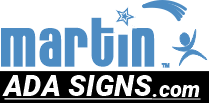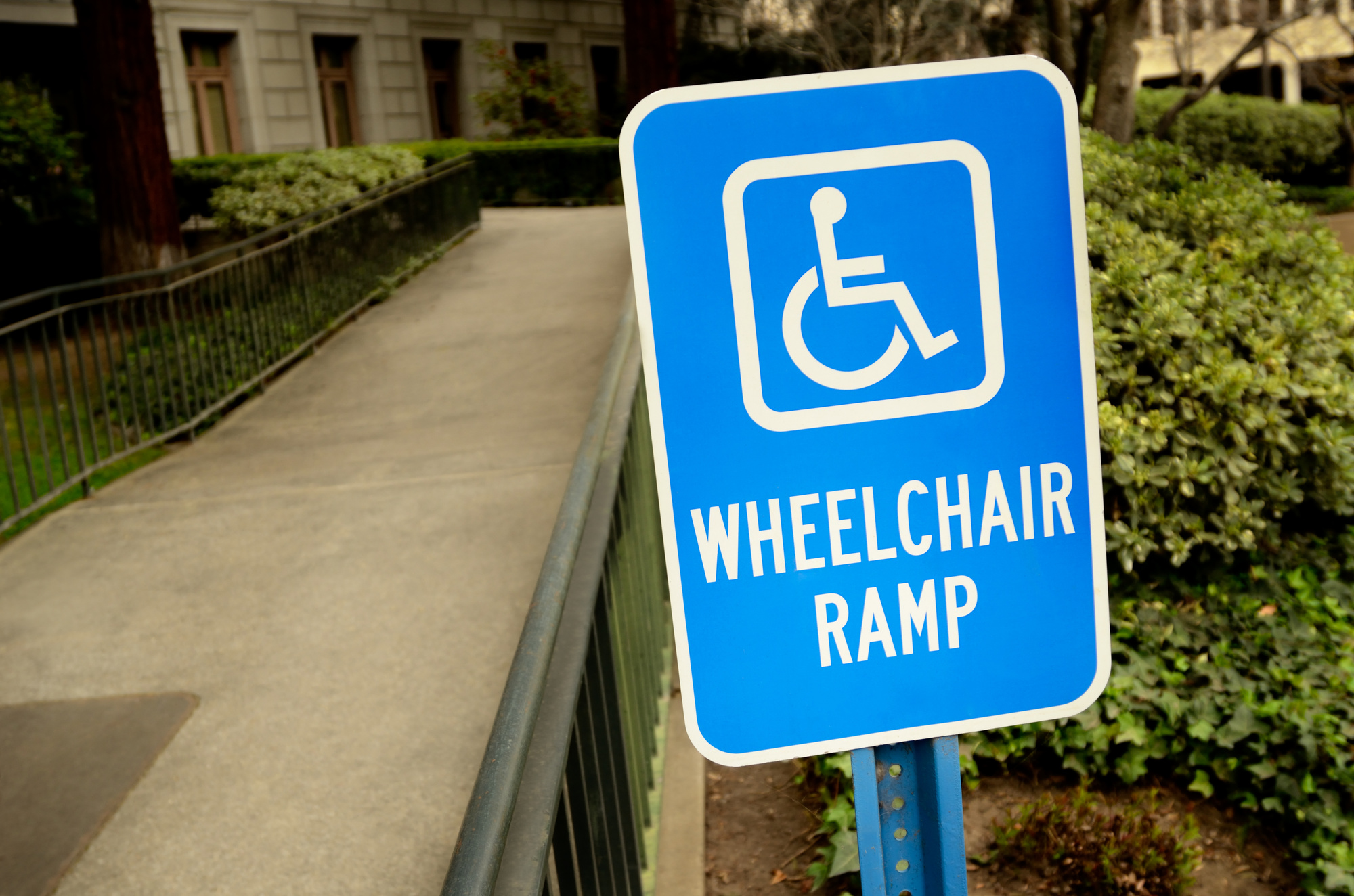Did you know that around 54 million Americans have disabilities?
As a business owner, you want to make sure that your customers and employees are safe and comfortable in your space. But with so many regulations to follow, it can be hard to keep up with all the requirements for ADA signage.
You don’t want to risk fines or customer complaints due to non-compliant signs. And if someone gets injured because of missing or incorrect signage, you could face serious legal consequences.
We understand how important it is for businesses like yours to stay compliant with ADA signage guidelines – which is why we created this complete guide on ADA signage. Keep reading because, with this resource, you can ensure that your company meets all the necessary standards without breaking the bank!
What is the ADA?
The Americans with Disabilities Act is a civil rights law in the America that prohibits discrimination against people with disabilities. This includes providing access to public spaces and services, including businesses and their signs.
ADA signage helps ensure that those living with disabilities can safely and easily navigate a business’ premises, avoiding obstacles such as steps or thresholds. For business owners, adhering to ADA guidelines means preventing customer complaints and expensive legal fees, as well as providing a safe and accessible environment for all customers.
What is Accessibility?
Accessibility means creating an environment that enables people of all abilities to use the same premises and services with equal ease, comfort, and safety. Under ADA guidelines businesses are expected to provide accessible pathways for customers using wheelchairs or other mobility devices, as well as those living with visual impairments.
Proper signage plays a key role in ensuring accessibility; by providing clear wayfinding instructions businesses can make sure their premises are safe and easy to navigate for everyone who visits them.
What Types of Signs Need to be Compliant?
All permanent business signs must comply with ADA standards to meet accessibility requirements. This includes:
Directional Signs
Directional signs are essential for organizations that want to facilitate efficient navigation on their premises. By providing informative signage directing customers to various departments or sections, a business can make it simpler and quicker for customers to locate their desired destination.
Clear directions issued through precise directional signs encourage customer satisfaction and reduce the level of confusion when using an unfamiliar area, while simultaneously promoting an orderly environment. Ultimately, easy-to-follow directional signs represent a cost-effective investment that can lead to long-term positive results for a business.
Identification Signs
Identification signs are important tools in helping customers find the services they need. They should be placed in conspicuous places that can be easily seen, such as entrances and windows. The information provided on the signs must be written in plain language that is both accurate and comprehensible to all readers, regardless of their literacy level or native language.
Identification signs help customers understand what your business has to offer, allowing you to create a positive first impression with new customers and leaving them more likely to become loyal clients.
Area-Specific Signs
Area-specific signs are a must-have for any business premises. They can provide safety guidance and clarity when it comes to understanding what is allowed and not allowed in each area of the building or facility. For example, exits need to be marked for evacuation purposes, smoke-free areas must be designated, and restrooms should always have signs that are easy to read.
In addition, these types of signs can help customers understand certain policy restrictions so they know what they’re getting into before they enter the space. All in all, area-specific signage is an important feature that should never be overlooked by business owners or property managers.
Warning Signs
Warning signs are an essential part of our environment, but not everyone takes them seriously. Even the most mundane sign can offer important information about potential hazards. For example, a cautionary wet floor warning is more than just a polite reminder – it’s a clear instruction that an area is wet and slippery and should be treated with extra caution lest you fall.
Color contrast is critical for warning signs because it ensures that people with vision impairments are not placed at risk of overlooking such warnings. With this in mind, businesses, corporations, and public spaces need to pay special attention to the color contrast on their warning signs to make sure all members of the community are staying safe in hazardous conditions.
5. Pictograms
Today, pictograms are becoming more and more popular for communication. These symbols can be found everywhere from airport signs to restaurant menus, where they give the viewer the information needed quickly and efficiently. They signify meanings with so little effort, expressing an idea by displaying a single, simple image.
Not only do they require no language or words beyond the occasional label, but they can also bridge cultural divides because of their ability to translate easily into other languages. Pictograms have thus become essential to communication across many industries and have moved beyond just signposts to become an essential part of everyday life as well.
Tactile Signs
For those struggling with visual impairments, navigating the world around them can often be a difficult task. Tactile signs represent an invaluable resource for this population, as they provide directional information that has been raised and can then be read by touch.
This helps level the playing field and gives individuals with limited vision more freedom to move around with confidence and ease. Furthermore, these raised symbols also eliminate having to rely on audio information which is not always available or trustworthy.
By having tactile signs as a readily available resource, those with visual impairments will have an easier time finding their way in unfamiliar spaces.
Additional Important Information
To ensure that your business signs are compliant with ADA standards, the size, and placement of characters must adhere to the guidelines set out by the laws. This includes:
- All text should be at least 1/32 inch tall
- Characters should have a width-to-height ratio of between 3:5 and 4:6
- Signs should be mounted so that their centerline is no higher than 60 inches from the floor
Business owners who fail to comply with these rules could face expensive fines, not to mention bad press and customer complaints. Making sure all signage complies with ADA regulations is an important part of creating an accessible environment for everyone who visits your premises.
Benefits of ADA Signs
Now that you know the basics of ADA signage, let’s look at some of the benefits. They include:
Improved Safety
From high-visibility banners to reflective signs, there are a variety of techniques businesses can employ to maximize safety and awareness in the workplace. With improved visibility and clarity, businesses can reduce the risk of dangerous conditions since people can more easily notice potential hazards.
Additionally, with enhanced readability, consumers or customers navigating any area of business premises can be guided in the right direction and potentially avoid harm or injury. Business owners who take these steps not only create a safer environment but also give their customers peace of mind.
Accessibility
Accessibility is an important element in creating a safe and welcoming environment for all. Lacking visibility for those with disabilities can put them in a precarious position when navigating unfamiliar surroundings. ADA-compliant signage provides a solution to this problem, providing accessible information to visitors of all abilities.
With the use of tactile lettering, textured surfaces, and braille readability, these signs ensure that everyone has an equal chance of accessing key points or services offered at an establishment, making the experience easier and more comfortable no matter who is visiting.
Branding Consistency
Establishing and maintaining a consistent brand identity across multiple locations is integral to any business. Utilizing ADA-compliant signage, logos, fonts, etc., can help create a recognizable presence, one that remains the same regardless of whether customers are at your business’s main location or an outpost in another state.
This uniformity helps cultivate customer trust and loyalty while also helping them quickly identify your business no matter where they are. By implementing the ADA signage requirements you can bring continuity to your branding efforts and benefit from the numerous advantages it affords companies in the process.
Cost Savings
As the cost of compliance continues to rise, businesses can no longer afford to delay implementing ADA regulations into their facilities. Failing to do so can result in hefty fines and other legal ramifications that will put a considerable hole in your pocket.
Increased Customer Satisfaction
Many businesses overlook the potential benefits of implementing ADA compliant signage, but increased customer satisfaction is certainly one of them. Not only does it meet requirements for compliance, but it also shows customers that their needs are being taken into account and that their patronization is appreciated.
Also, since not all customers may have knowledge about accessibility or be able to take advantage of it if it does not exist, having such signage in place makes the visit more enjoyable for everyone. This significantly increases customer satisfaction, money well spent for any business wanting to stand out amongst its competitors.
By investing in ADA signage now, you can easily ensure compliance with federal laws while at the same time avoiding having to pay for costly fines and other lengthy court proceedings. Moreover, investing in quality ADA signage also reassures customers that your business is responsible and accessible, which helps generate more loyal customers that are willing to invest more money into your products or services.
Benefits of Following ADA Guidelines
Now that you know what types of signs must comply with ADA guidelines and the important information related to compliance, it’s time to explore the benefits of adhering to these regulations. Following ADA rules can help ensure that your business:
- Is perceived as a safe and friendly place for customers living with disabilities
- Avoids costly fines or penalties for failing to comply
- Prevents customer complaints or bad press related to accessibility issues
- Creates an inclusive environment where everyone feels welcome; and
- Provides clear guidance on safety protocols and other relevant information
Making sure your business’ signage is compliant with the ADA is essential for providing an accessible environment for all customers, avoiding penalties, and ensuring a positive customer experience.
Risks of Not Following ADA Guidelines
However, failing to adhere to ADA regulations can have serious consequences for businesses. The risks of not following these guidelines include:
- Facing expensive fines or penalties
- Being held liable in case of an injury related to a lack of ADA compliance
- Negative publicity resulting from customer complaints about accessibility issues or safety hazards; and
- Potential loss of customers due to a perceived lack of consideration for those living with disabilities
This is why it is essential for business owners to make sure their signage is compliant with ADA standards.
Get the ADA Signage You Need to Be Compliant
ADA signs matter because they ensure that people with disabilities can navigate areas safely and effectively. By clearly labeling exits, restrooms, and other important areas, ADA signage can help to create a more inclusive and welcoming environment for everyone.
When choosing an American with disabilities sign for your workplace, be sure to consult with an expert to ensure that you are choosing the right sign for your needs.
Are you ready to find the right signs for your workplace? Get a custom quote for the signs you need from a manufacturer that understands the requirements.

